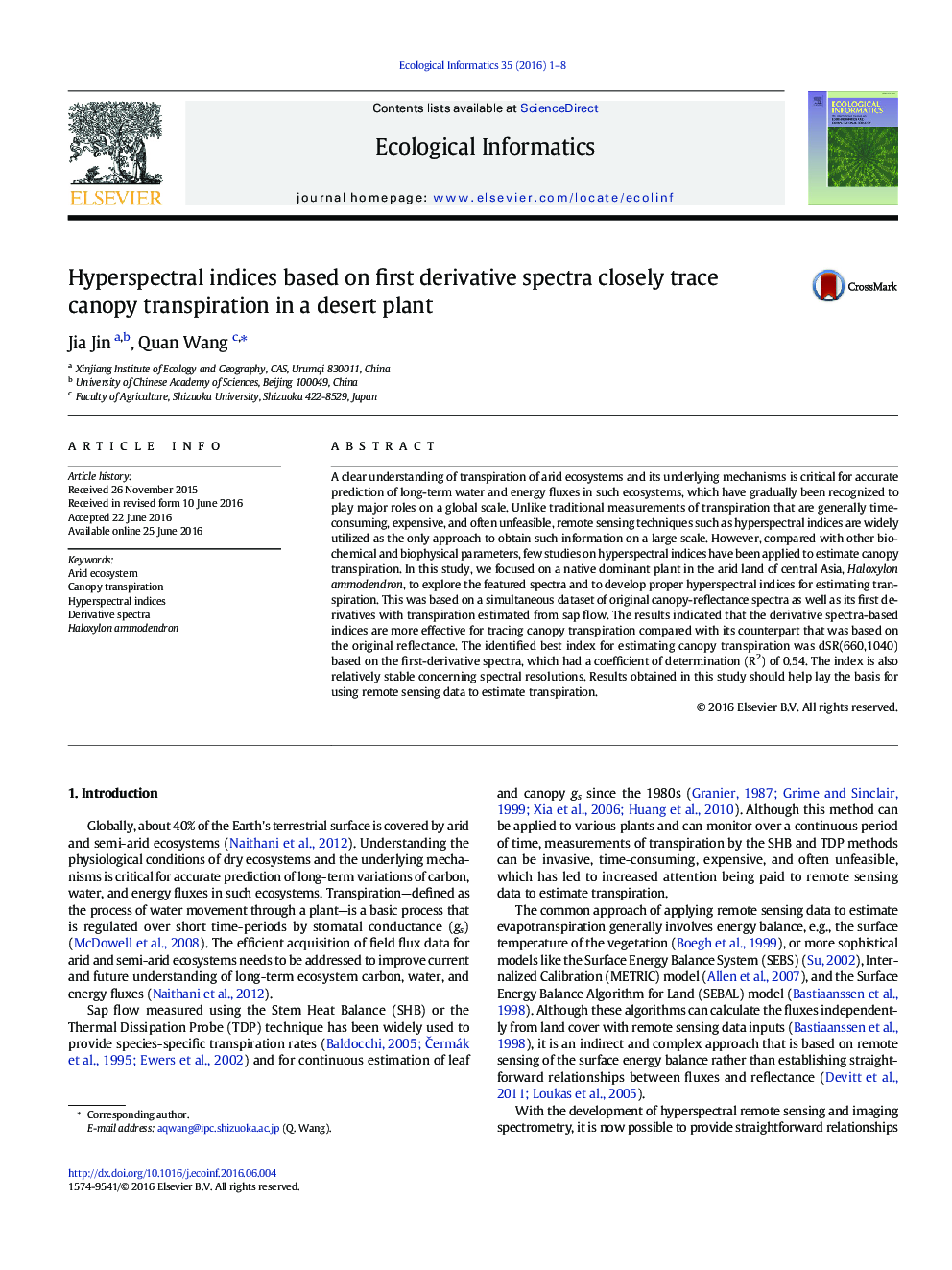| Article ID | Journal | Published Year | Pages | File Type |
|---|---|---|---|---|
| 4374746 | Ecological Informatics | 2016 | 8 Pages |
•Hyperspectral indices were developed for tracing canopy transpiration.•First-derivative spectra-based indices performed better.•The identified index functions stably at different spectral resolutions.
A clear understanding of transpiration of arid ecosystems and its underlying mechanisms is critical for accurate prediction of long-term water and energy fluxes in such ecosystems, which have gradually been recognized to play major roles on a global scale. Unlike traditional measurements of transpiration that are generally time-consuming, expensive, and often unfeasible, remote sensing techniques such as hyperspectral indices are widely utilized as the only approach to obtain such information on a large scale. However, compared with other biochemical and biophysical parameters, few studies on hyperspectral indices have been applied to estimate canopy transpiration. In this study, we focused on a native dominant plant in the arid land of central Asia, Haloxylon ammodendron, to explore the featured spectra and to develop proper hyperspectral indices for estimating transpiration. This was based on a simultaneous dataset of original canopy-reflectance spectra as well as its first derivatives with transpiration estimated from sap flow. The results indicated that the derivative spectra-based indices are more effective for tracing canopy transpiration compared with its counterpart that was based on the original reflectance. The identified best index for estimating canopy transpiration was dSR(660,1040) based on the first-derivative spectra, which had a coefficient of determination (R2) of 0.54. The index is also relatively stable concerning spectral resolutions. Results obtained in this study should help lay the basis for using remote sensing data to estimate transpiration.
